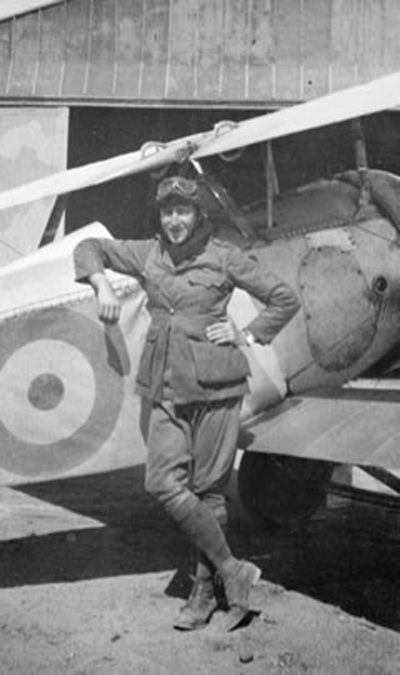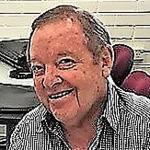
His grandfather helped William Booth found the Salvation Army and Hudson Taylor the famous China Inland Mission. His mother Mary spent time working as a missionary in China with Hudson Taylor and with the Rev George Brown in Papua New Guinea.
With such a Christian heritage it would come as no surprise when Frederick and Mary Fysh’s first son was born, he was christened Hudson after the very well-known missionary pioneer to China, Hudson Taylor.
Hudson was born in 1895 at Launceston, Tasmania, the oldest of five siblings: Hudson, Henry, Margaret, Mary and Graham. His childhood was marred by the failure of his parents' marriage and his father's business. Originally staying with his father, he ran away so often that eventually he was able to stay with his mother. In spite of this dysfunctional start to life he became Sir Hudson Fysh, founder of the Australian airline QANTAS.
Fysh attended various schools including Launceston Grammar School and Geelong Church of England Grammar School. A poor student at school, Fysh tried to make up for his lack of training; he read voraciously, studied economics and took a course in Pelmanism (memory-training). After leaving school he became a jackaroo and a wool classer.
At the outbreak of war, Fysh enlisted as a trooper in the 3rd Regiment of the 1st Australian Light Horse Brigade. Serving in Gallipoli and in Egypt and Palestine he was commissioned lieutenant in 1916 in the brigade's machine-gun squadron before transferring to the Australian Flying Corps as an observer. Fysh proved an accurate and competent gunner.
1918
In 1918 he was heavily involved in actions against German and Turkish aircraft, airfields and ground troops. He shot or forced down a number of enemy aircraft, including two destroyed on one day. He was awarded the Distinguished Flying Cross in 1919. Before returning to Australia Fysh qualified as a pilot.
Seeing the potential in aviation, with his partners, and using mainly war disposals aircraft, Fysh formed the Queensland and Northern Territory Aerial Services Ltd in 1920. He remained a regular company pilot for a decade. A shy, quiet man, he had nevertheless great political acumen and a hard head for business and soon established a reputation as a stern, uncompromising taskmaster. He became managing director of QANTAS in 1923, remaining a regular pilot until 1930, when the company registered its first million miles (1.61 million km) and moved its head office to Brisbane.
Grand-parents missionary endeavours
No doubt the legacy of Fysh’s grandfather and mother’s missionary endeavours had a significant effect on his outlook on life. Fysh’s friendship with the Rev John Flynn demonstrated this fact. QANTAS leased, on very favourable terms, a De Havilland 50 aircraft, the first machine available and suitable for aerial medical work. This was a refurbished war plane especially built to carry a stretcher, a doctor and the pilot.
History was made and Flynn's vision for a flying doctor service became a reality on 17 May 1928 when Dr St Vincent Welch, pilot Affleck at the controls of Victory, answered the first call received by the Aerial Medical Service before it became the Royal Flying Doctor Service. Flynn’s motto was "For Christ and the Continent." This relationship between Fysh and Flynn was instrumental in the growth of outback Australia.
In April 1931 Fysh flew the Brisbane-Darwin section of an experimental airmail service between Australia and England. In 1933, as a passenger in the British Imperial Airways monoplane Astraea, he made a survey of the route to Karachi and on 18 January 1934 QANTAS in equal partnership with Imperial Airways founded Qantas Empire Airways Ltd (QEA), with Fysh as managing director.
Competition
In the face of fierce competition from other local airlines and Royal Dutch Airlines (KLM), the new company secured the Australian government airmail contract between Australia and England. With the opening of the England-Australia flying boat service in 1938, the headquarters was moved to Sydney. In 1940 Fysh was a founding director of Tasman Empire Airways Ltd (TEAL) which established the first air service to New Zealand.
During the Second World War, Qantas, under Fysh’s guidance, assisted the war effort. This included flying long routes and taking troops and equipment to New Guinea and bringing home casualties. In 1947 the Commonwealth acquired the company but Fysh remained managing director; he was chairman until 1966, by which time the company had become established as one of the world’s leading airlines.
Sir Hudson Fysh passed away on April 6th 1974, aged seventy nine. He was survived by his wife Elizabeth and a son and daughter. Now Qantas Airways Limited is the flag carrier of Australia and its largest airline by fleet size, international flights and international destinations. The red triangle, with a white silhouette of a kangaroo inside it, is the iconic logo of QANTAS.

https://www.awm.gov.au/visit/exhibitions/fiftyaustralians/19
http://adb.anu.edu.au/biography/fysh-sir-wilmot-hudson-6263
https://atributetoaustralianchristians.wordpress.com/2013/03/04/vh-uer/
http://www.flyingdoctor.org.au
Logo celebrating 100 years since QANTAS’ inception.

Graham McDonald is the President of Diduno